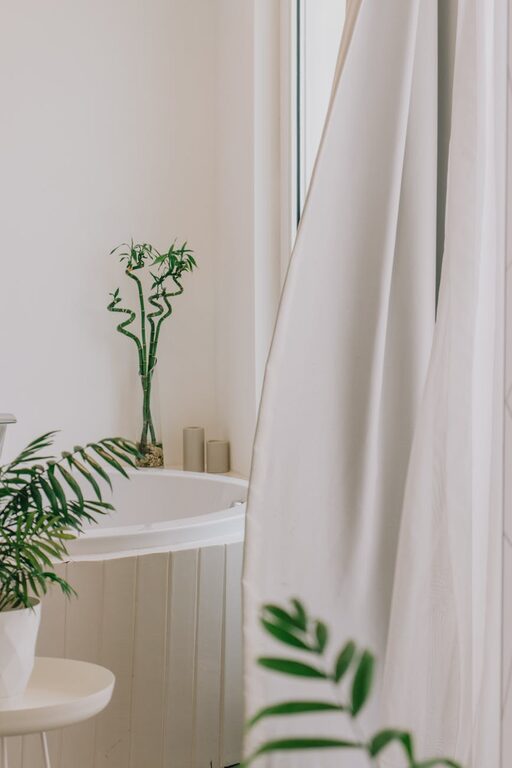Creating a minimalist bathroom setup is an excellent way to bring calm and order to one of the most frequently used spaces in your home. A clutter-free, simple bathroom can make your daily routines smoother and help you feel relaxed. If you’re considering a bathroom makeover or just want to streamline your current space, this guide will walk you through practical steps to achieve a minimalist bathroom that is both beautiful and functional.
What is a Minimalist Bathroom?
Minimalism in design focuses on simplicity, clean lines, and functionality. In the context of a bathroom, this means reducing clutter, using neutral colors, and integrating only the essentials. Rather than decorating with many items, a minimalist bathroom emphasizes quality over quantity and often incorporates modern fixtures and subtle textures.
Step 1: Clear Out and Declutter
Before adding or changing anything, take stock of what you currently have.
– Remove all items: Take out everything from countertops, shelves, and cabinets.
– Sort through products: Dispose of expired or unused toiletries and makeup.
– Keep essentials only: Decide what items you genuinely use daily and store or throw away the rest.
Decluttering sets the foundation for a minimalist look by reducing visual noise and making storage easier.
Step 2: Choose a Neutral Color Palette
Minimalist bathrooms often feature neutral colors that evoke calmness and openness.
– White or off-white: Brightens the space and creates a clean look.
– Soft grays: Add subtle contrast without overwhelming.
– Beige and natural tones: Bring warmth while keeping it simple.
You can also use one or two accent colors sparingly, such as in towels or soap dispensers, to avoid a sterile atmosphere.
Step 3: Opt for Simple, Functional Fixtures
When selecting fixtures, look for those that combine functionality with straightforward design.
– Vanity and sink: Choose ones with clean lines and minimal ornamentation.
– Faucets and showerheads: Matte black, brushed nickel, or chrome with sleek shapes work well.
– Mirrors: Frameless or thin-framed mirrors enhance simplicity.
Built-in storage under the sink helps keep items out of sight, maintaining the minimalist vibe.
Step 4: Maximize Storage with Minimal Visual Impact
Effective storage is essential to avoid clutter without adding bulky furniture.
– Floating shelves: Provide storage while keeping the floor space open.
– Recessed niches: Built into the shower or walls to hold shampoos and soaps.
– Drawer organizers: Keep small items tidy inside cabinets.
– Hooks and rails: Seamlessly mount towels and robes.
Keep storage containers or baskets uniform in color and design for a cohesive look.
Step 5: Select Minimalist Accessories Carefully
Accessories should serve a purpose or enhance the design without cluttering.
– Soap dispensers and toothbrush holders: Match materials and colors for consistency.
– Plants: Small succulents or air plants add a natural touch without overwhelming.
– Artwork: One simple piece or none at all keeps the focus on clean space.
– Lighting: Soft, even lighting with recessed fixtures or simple sconces improves ambiance.
The key is to limit accessories to a few well-chosen pieces that complement the overall aesthetic.
Step 6: Focus on Materials and Textures
Though minimalism highlights simplicity, mixing subtle textures adds interest.
– Tiles: Large-format tiles with a matte finish create a streamlined look.
– Wood elements: Light wood vanity or shelving introduces warmth.
– Linens: Choose towels and mats in soft cotton or bamboo with minimal patterning.
– Glass and metal: Transparent glass shower doors and metal fixtures add sleekness.
Balancing different textures prevents the space from feeling cold or sterile.
Step 7: Maintain Your Minimalist Bathroom
Keeping your minimalist bathroom beautiful requires ongoing care.
– Daily tidying: Put items back after each use.
– Regular cleaning: Prevent buildup to preserve the clean look.
– Periodic decluttering: Reassess what you have to remove unnecessary products.
Developing simple maintenance habits can keep your bathroom feeling fresh and inviting.
Bonus Tips for Small Bathrooms
If your bathroom is on the smaller side, minimalism can be particularly effective at making it feel larger.
– Use a wall-mounted vanity to open up floor space.
– Opt for a clear glass shower enclosure instead of curtains.
– Install large mirrors to reflect light and visually expand the room.
– Keep the color scheme light and uniform for a more spacious feel.
Final Thoughts
Creating a minimalist bathroom setup is about more than trends — it’s about crafting a space that feels peaceful and supports your daily routines. By decluttering, choosing the right colors and fixtures, and focusing on simple, functional storage, you can transform your bathroom into a calm retreat. Whether you’re starting from scratch or making small changes, these steps will help you enjoy a clutter-free and refreshing bathroom every day.



